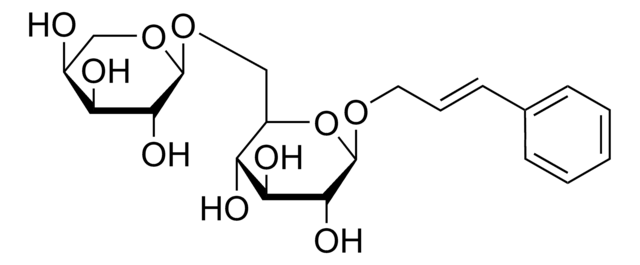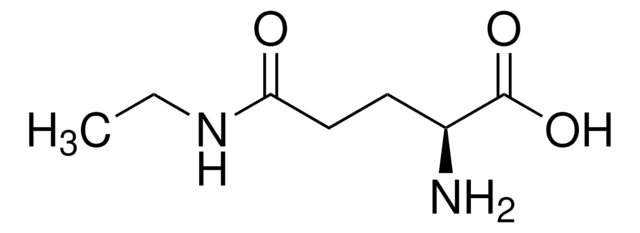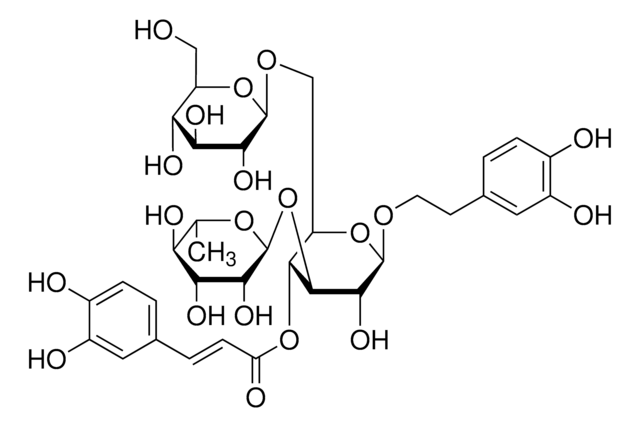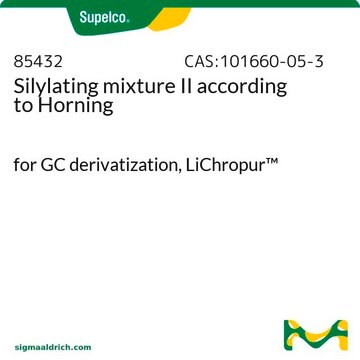43866
Salidroside
analytical standard
Sinonimo/i:
2-(4-Hydroxyphenyl)ethyl β−D-glucopyranoside, p-Hydroxyphenethyl glucopyranoside, Rhodioloside, Rhodosin, Tyrosol a-(β-D-glucopyranoside)
About This Item
Prodotti consigliati
Grado
analytical standard
Livello qualitativo
Saggio
≥98.0% (HPLC)
Attività ottica
[α]/D -29±2°, c = 0.5 in methanol
tecniche
HPLC: suitable
gas chromatography (GC): suitable
applicazioni
food and beverages
Formato
neat
Stringa SMILE
OC[C@H]1O[C@@H](OCCc2ccc(O)cc2)[C@H](O)[C@@H](O)[C@@H]1O
InChI
1S/C14H20O7/c15-7-10-11(17)12(18)13(19)14(21-10)20-6-5-8-1-3-9(16)4-2-8/h1-4,10-19H,5-7H2/t10-,11-,12+,13-,14-/m1/s1
ILRCGYURZSFMEG-RKQHYHRCSA-N
Cerchi prodotti simili? Visita Guida al confronto tra prodotti
Categorie correlate
Descrizione generale
Applicazioni
Azioni biochim/fisiol
Confezionamento
Avvertenze
Warning
Indicazioni di pericolo
Consigli di prudenza
Classi di pericolo
Eye Irrit. 2
Codice della classe di stoccaggio
11 - Combustible Solids
Classe di pericolosità dell'acqua (WGK)
WGK 3
Punto d’infiammabilità (°F)
Not applicable
Punto d’infiammabilità (°C)
Not applicable
Choose from one of the most recent versions:
Possiedi già questo prodotto?
I documenti relativi ai prodotti acquistati recentemente sono disponibili nell’Archivio dei documenti.
I clienti hanno visto anche
Il team dei nostri ricercatori vanta grande esperienza in tutte le aree della ricerca quali Life Science, scienza dei materiali, sintesi chimica, cromatografia, discipline analitiche, ecc..
Contatta l'Assistenza Tecnica.













